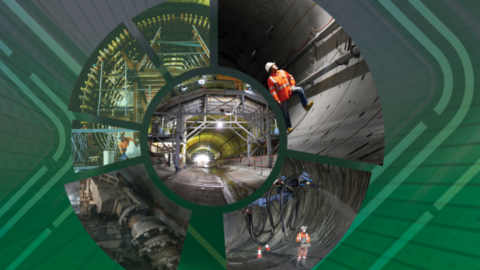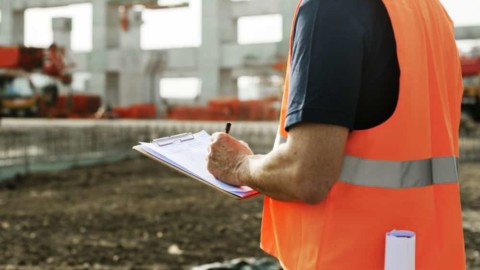
With great optimism, I anticipate 2021 will be the year that marks the turning point in the quest for a more sustainable construction industry. We have a unique opportunity to achieve real and lasting reform, but it will require the support of the entire sector.
Governments are relying heavily on the construction industry to lead the economy out of recession, but our industry is sick. Profitability is at an all-time low and productivity growth over the last 30 years trails that of other significant industries by 25 per cent.
Women make up only 12 per cent of the construction workforce, and construction workers are six times more likely to die from suicide than a workplace incident.
There is a broad consensus that this sustainability crisis must be addressed for the construction industry to deliver the planned pipeline of projects efficiently, with the resources available, whilst leveraging opportunities to increase training, local procurement and engagement of indigenous and social enterprise.
In late-2020, the ACA published a series of documents that charted a clear way forward. Starting with an analysis of the most pressing problems facing the industry, we then developed a framework for a more sustainable sector, followed by an industry charter comprising ten commitments to reform embraced by Australia’s leading construction and infrastructure contracting companies.
Amongst other things, we identified that a sustainable construction industry is one built on the three key pillars of: equitable and aligned commercial frameworks; a strong positive culture; and the capability, capacity and skills to execute the projects it is called upon to deliver.
All three pillars are interlinked, and therefore improvement in one requires improvement in all. As an example, it is widely understood that adversarial commercial frameworks negatively impact culture, and a positive industry culture is a key factor in attracting people into the industry.
Equitable and aligned commercial frameworks
Part of the solution to the challenges faced by the industry is greater use of contracts that promote a collaborative industry culture and incentivise innovation. True value can only be achieved when all the parties’ interests on a project are aligned, and when open and transparent sharing of information is encouraged.
This is not a call for widespread use of alliance contracts, although the use of alliance contracts to deliver the Level Crossing Removal Program in Melbourne is delivering an exceptional outcome. There will always be instances where the use of lump sum or design and construct contracts are more appropriate.
However, there is no reason why these traditional commercial frameworks cannot be drafted to contain more collaborative and equitable provisions, particularly regarding management of project risk.
More collaborative and equitable forms of contracts are in use elsewhere in the world and could easily be adopted here to save time and effort developing new contracts or amending existing forms. The best example of which is the NEC suite of contracts from the UK.
Positive industry culture
While there have been some improvements to industry culture in recent times, construction workplaces and behaviours need to take a quantum leap if we are to make our industry a more resilient and attractive sector to work in, particularly for women.
The Construction Industry Culture Taskforce will shortly start consultation on a draft Culture Standard that seeks to align all parts of industry on the requirements necessary to make this leap.
Sufficient capacity, capability and skills
To avoid capacity and capability constraints in the long term, there needs to be increased collaboration between government and industry to better identify potential skills shortages well in advance. This can be achieved through skills mapping and transparent, accurate project pipeline data.
The data could then be used to smooth resource peaks by amending project start dates or to inform training initiatives to address potential shortfalls.
In the short term, with closed international borders and long lead times to train new people, we need to focus on increasing the efficiency of our procurement and delivery processes.
For example, we should put our valuable resources to work optimising designs and de-risking projects through advance works, rather than tying them up at tender producing volumes of information that add little or no value.
The opportunity
If we could just halve the gap in productivity growth that has been created between the construction industry and other industries over the past 30 years, we could construct an extra $10 billion of infrastructure every year for the same level of expenditure!
This will be vital in a post-COVID-19 world with high levels of government debt, but no less of a requirement to construct productivity-enhancing infrastructure.
As a starting point, we need more collaborative partnerships between state governments and the private sector to enhance the three pillars supporting the sustainability of the industry.
To fully realise this opportunity, the Federal Government needs to take a more active role in defining and incentivising the use of best practice procurement and delivery processes.
The Construction Playbook, recently published by the British Government, accompanied by a direction to use it or explain why not, is a good example of how this could be done.
In comparison to many other countries, Australia has done a remarkable job in managing COVID-19. In part, this is the outcome of strong collaboration between the public and private sectors.
This collaboration is transferable, and it is incumbent upon us all to grasp this unexpected opportunity for change with both hands in order to rebuild trust and develop a more sustainable industry for the benefit of all Australians.
For more information, and to view ACA’s document series and industry charter, please visit www.constructors.com.au/initiatives/industry-reform.
Jon will be speaking on the industry panel at the Critical Infrastructure: State of Play Virtual Conference on 13 April, as part of the 2021 Critical Infrastructure Summit. The Summit is free to attend for infrastructure asset owners, government and not-for-profits. Register at www.critical-infrastructure.com.au/tickets.

















